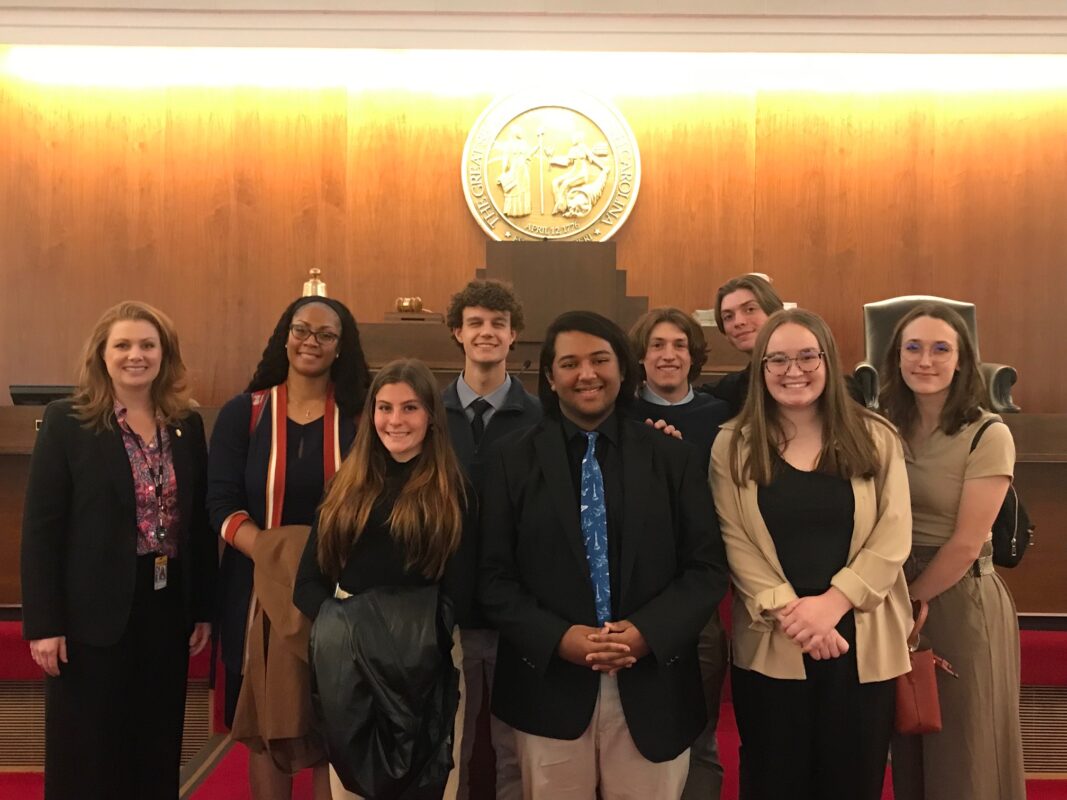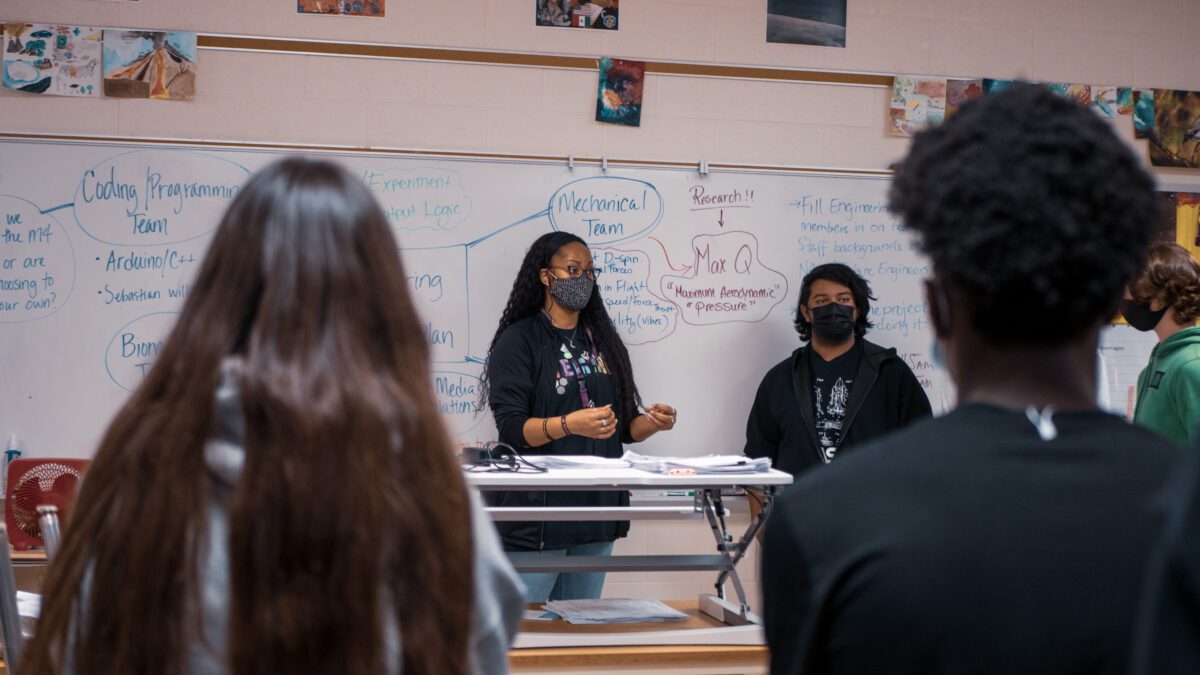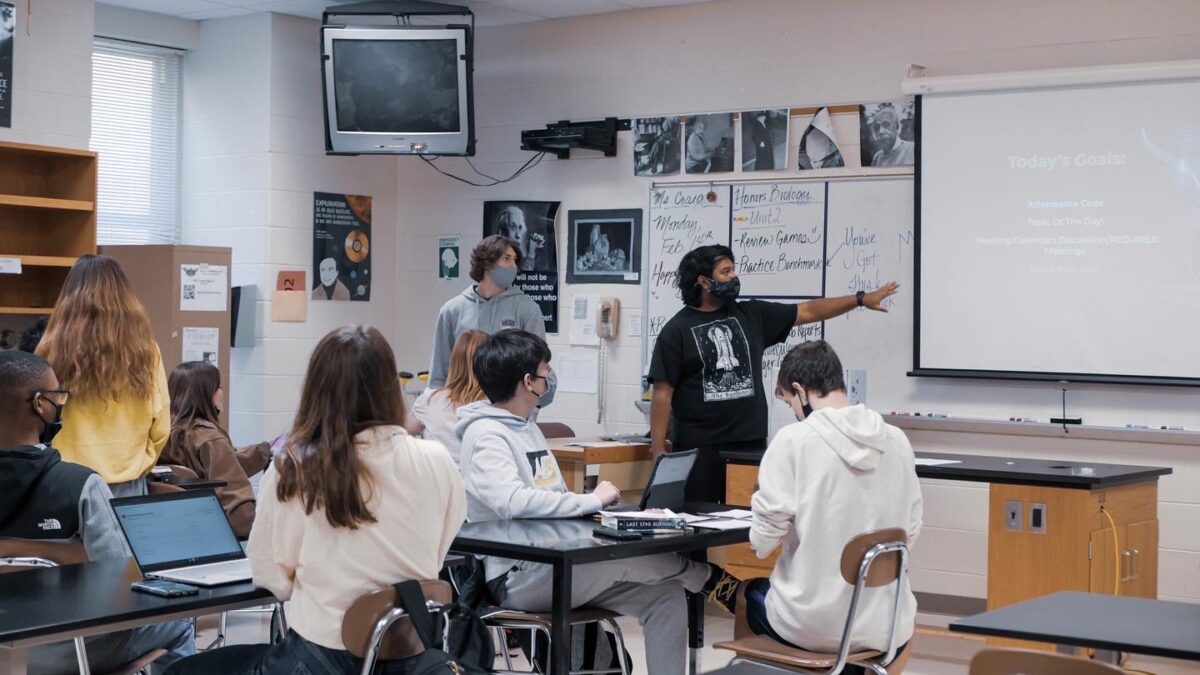HOLLY SPRINGS, N.C. ⸺ A team of students at Holly Springs High School led by 2021-22 Kenan Fellow Tiffanni Craig has been selected to build an experiment that will autonomously operate and collect data from the edge of space aboard a suborbital rocket.
Craig and her students were among 57 winning teams nationwide to be selected for the inaugural challenge designed to attract, engage, and prepare future science, technology, engineering, and mathematics (STEM) professions, according to a press release by NASA.
The challenge is administered by Future Engineers and aims to motivate students to seek a deeper understanding of Earth’s atmosphere, space exploration, coding, and electronics, and an awareness of the importance of test data, the press release said.





“Seeing how the students have been able to apply the physics I teach has been the most amazing gift. That is every science teacher’s dream, and I am incredibly proud.”
2021-22 Kenan Fellow Tiffani Craig
Holly Springs High School is one of two North Carolina schools selected to participate in the challenge and the only school in the Triangle area. A team from Asheville High School in Western NC was also selected.
NC State General Assembly Recognition
Craig is the advisor of Holly Springs High School Aerospace and Engineering Club, which has about 30 student members in grades 9th through 12th. The students are building a device that is capable of creating and measuring 1G of artificial gravity. The device would help astronauts who are at risk of suffering from symptoms associated with elevated intracranial pressure caused by living in microgravity during long-range space missions.
Club members were invited to the NC General Assembly by Rep. Erin Paré, and were recognized for their achievement on the House Floor. Watch a video of the recognition.
“What I love about this is that this is a real life application that I can see.”
Engineering Club Member Melissa Roberts
“This is exciting to me because I’ve always loved aerospace, but in middle school, the problems were just on a piece of paper,” club member Melissa Roberts told Suburban Living Magazine in an article about the project. “What I love about this is that this is a real-life application that I can see.”
The club has received $1,500 to build their experiment and has secured a NASA-funded spot to test it on a suborbital rocket flight operated by Blue Origin or UP Aerospace. Club members have built a prototype and have presented it to representatives from Future Engineers, and expect to be finished with their project in three to four weeks. The flight test is scheduled for early 2023.